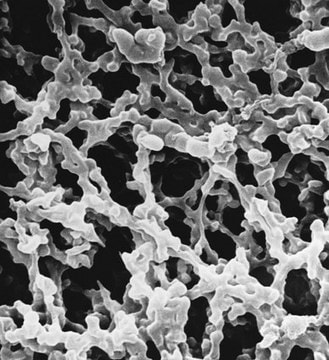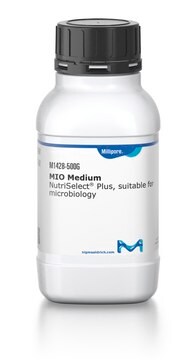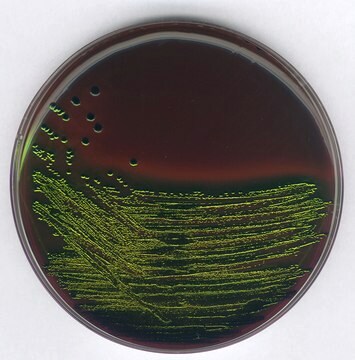51463
Urea Broth
NutriSelect® Basic, suitable for microbiology
About This Item
Recommended Products
sterility
non-sterile
Quality Level
product line
BioChemika
form
powder
shelf life
limited shelf life, expiry date on the label
composition
dipotassium hydrogen phosphate, 9.5 g/L
phenol red, 0.01 g/L
potassium dihydrogen phosphate, 9.1 g/L
urea, 20 g/L
yeast extract, 0.1 g/L
manufacturer/tradename
NutriSelect® Basic
technique(s)
microbe id | specific enzyme detection: suitable
microbiological culture: suitable
final pH
6.8±0.2 (25 °C)
application(s)
clinical testing
environmental
food and beverages
microbiology
suitability
nonselective and identification for Enterobacter spp.
nonselective and identification for Escherichia coli
nonselective and identification for Klebsiella spp.
nonselective and identification for Proteus spp.
nonselective and identification for Salmonella spp.
nonselective and identification for coliforms
nonselective and identification for enterobacteriaceae
Application
Preparation Note
Other Notes
Footnote
The designations basic, plus, or prime are added to indicate the quality control level, from basic quality control to standard QC plus to prime for full regulatory compliance.
Legal Information
Not finding the right product?
Try our Product Selector Tool.
Storage Class Code
11 - Combustible Solids
WGK
WGK 1
Flash Point(F)
Not applicable
Flash Point(C)
Not applicable
Personal Protective Equipment
Choose from one of the most recent versions:
Already Own This Product?
Find documentation for the products that you have recently purchased in the Document Library.
Articles
Salmonella contamination is the second leading cause of food-borne illness worldwide. Controlling outbreaks of Salmonella is an important task for food regulators, restaurants and the food industry in general. The Salmonella family includes over 2,300 serotypes of bacteria, but two types, Salmonella enteritidis and Salmonella typhimurium, are responsible for about half of all human infections. Most outbreaks of Salmonella are traced back to dairy, poultry and meat products, but Salmonella can grow on nearly any food. Chicken, eggs and their derivative products are particularly high risk.
An article concerning selective growth media for differentiation and detection of Escherichia coli and other coliforms.
Our team of scientists has experience in all areas of research including Life Science, Material Science, Chemical Synthesis, Chromatography, Analytical and many others.
Contact Technical Service






